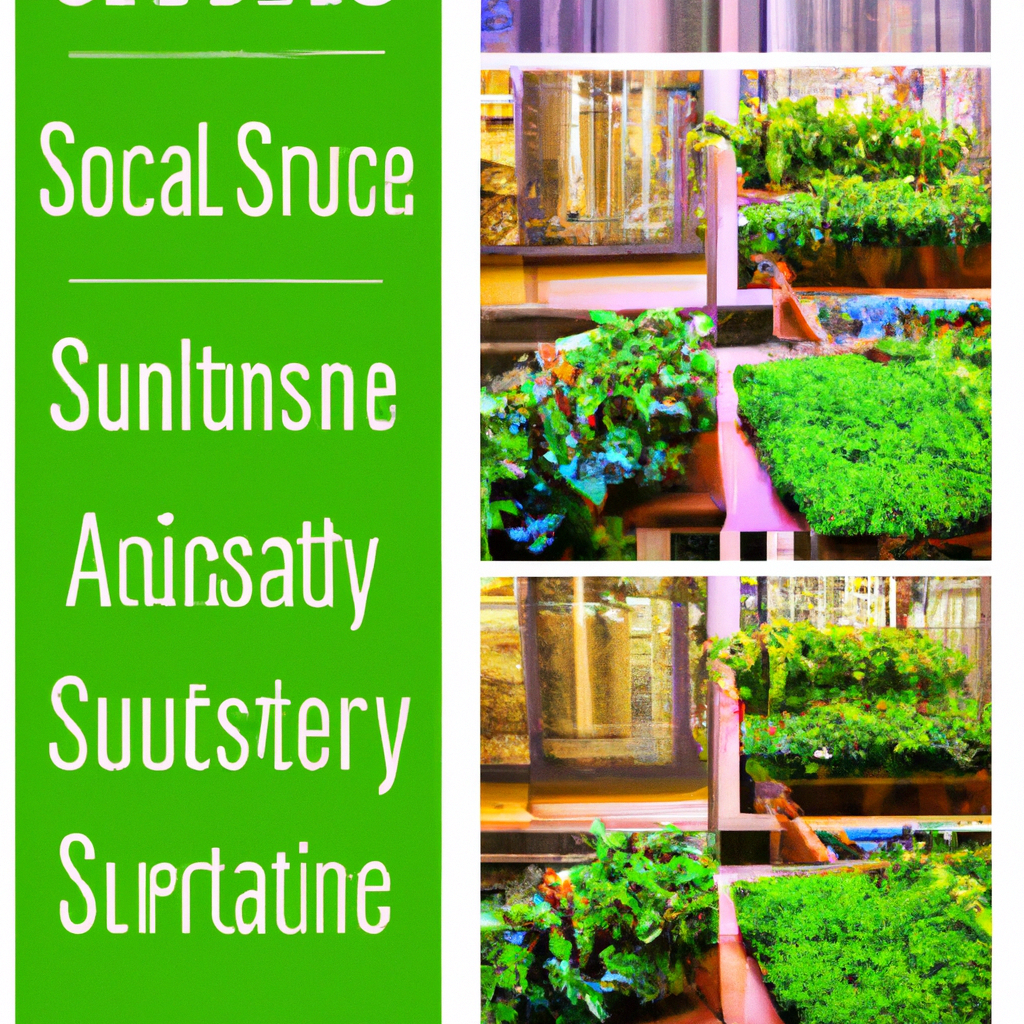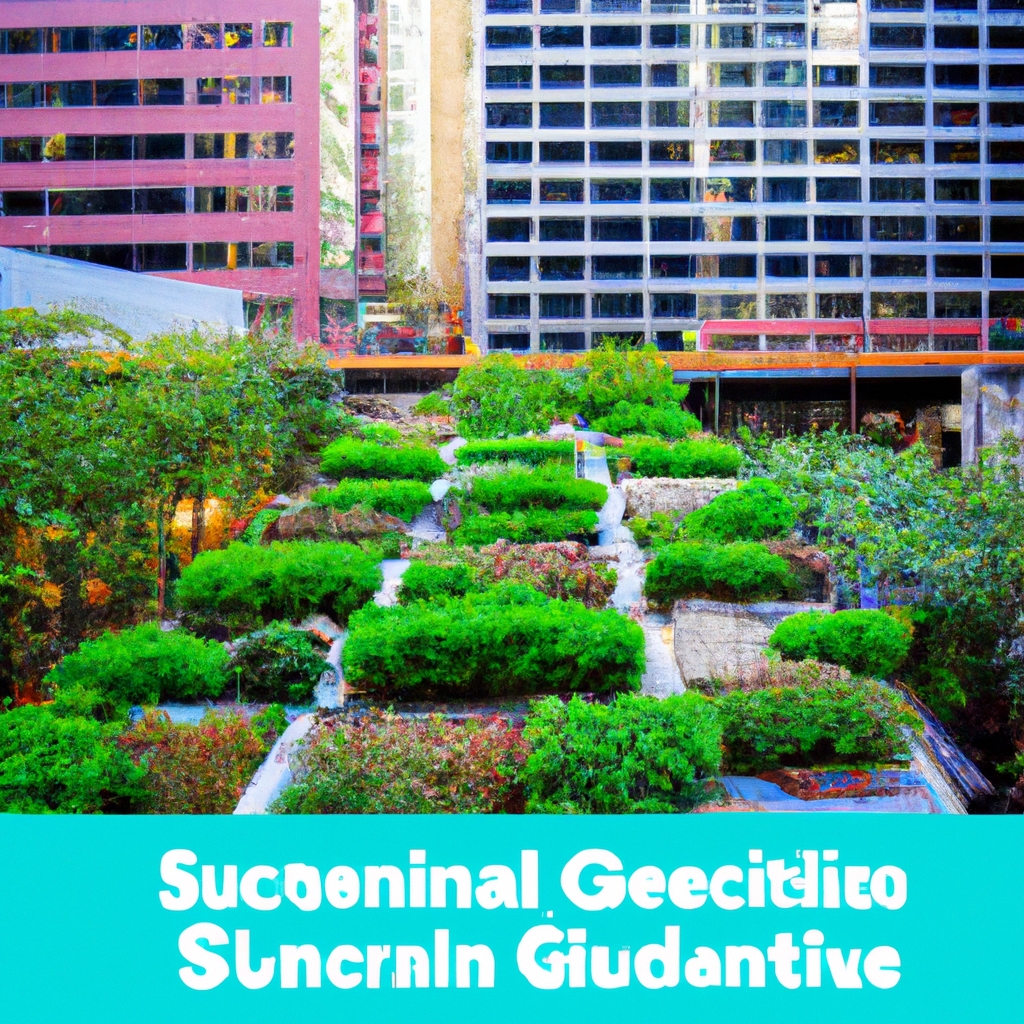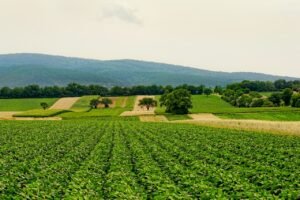
Imagine having fresh, organic produce right at your fingertips, even if you live in a small urban apartment. It may seem like a far-fetched dream, but sustainable agriculture solutions in urban areas are making it a reality. With the rise of urban farming in small spaces, individuals are finding innovative ways to grow their own food, even without access to a traditional garden. From rooftop gardens to vertical farming systems, this article will explore the exciting world of sustainable agriculture in urban environments, revealing how anyone can become a green-thumb gardener, regardless of the size of their living space.

Sustainable Agriculture Solutions in Urban Areas
In recent years, the concept of sustainable agriculture has gained momentum as a means to address food security, environmental concerns, and the increasing urbanization of our world. With limited land availability in urban areas, traditional farming methods may not be feasible or efficient. That’s where innovative solutions like vertical farming, hydroponic systems, rooftop gardening, container gardening, aquaponics, permaculture, community gardens, composting practices, and support for local food systems come into play. By adopting these techniques and principles, urban areas can become self-sufficient in terms of food production and contribute to a healthier and more sustainable future.
Utilizing Vertical Farming Techniques
Vertical farming is a revolutionary technique that maximizes land use vertically, allowing for higher crop yields in smaller spaces. By utilizing space-efficient vertical structures, such as tower gardens or vertical shelves, urban farmers can grow a wide variety of crops in a controlled environment. Incorporating hydroponic systems into vertical farms further enhances productivity by providing plants with the necessary nutrients directly in water solutions, without the need for soil. Additionally, efficient lighting and irrigation strategies can be implemented to optimize plant growth and resource consumption. The benefits of vertical farming extend beyond increased yield; they also include reduced water usage, minimized pesticide use, and a year-round growing season.

Implementing Hydroponic Systems
Hydroponics is a soilless farming technique that presents an excellent solution for urban areas. By growing plants in nutrient-rich water solutions, hydroponic systems eliminate the reliance on arable land and save water. In urban environments, where space is limited and precious, hydroponic systems can be customized to fit any available area. From vertical towers to small indoor setups, these systems can accommodate various plant species. To optimize nutrient and water management, urban farmers can utilize automated systems and monitoring technologies. The economical and environmental advantages of hydroponics include higher crop yields, reduced water usage, minimized need for synthetic fertilizers, and decreased susceptibility to pests and diseases.
Promoting Rooftop Gardening
One often-overlooked space in urban areas is rooftops. Converting rooftops into productive spaces is an effective way to utilize unused areas for agriculture. Rooftop gardening allows for the cultivation of a diverse range of crops, including fruits, vegetables, and herbs. When selecting plant varieties for rooftop gardening, it is crucial to choose species that are suitable for the specific climate and growing conditions. Structural considerations should also be taken into account, as not all rooftops are designed to support the weight of a garden. Moreover, implementing rooftop gardens contributes to mitigating the urban heat island effect by reducing heat absorption and improving air quality, making cities more sustainable and livable.

Demonstrating Container Gardening
Container gardening is a versatile solution for urban dwellers with limited space. It involves growing plants in containers or pots, allowing for mobility and flexibility in small areas. Whether you have a balcony, a rooftop, or even just a windowsill, container gardens can flourish. When choosing containers and soil for urban environments, it is essential to consider drainage and space requirements for each plant. Regular care and maintenance, such as watering, pruning, and fertilizing, are crucial for the success of container gardens. One of the significant advantages of container gardening is the ability to move the plants around according to the sun’s position or weather conditions, allowing for optimal growth throughout the year.
Exploring Aquaponic Systems
Aquaponics is an innovative farming method that combines aquaculture (fish farming) with hydroponics (plant cultivation in water). It operates on the principles of symbiosis, where fish waste provides nutrients for the plants, and the plants filter and purify the water for the fish. Setting up and operating an aquaponic system involves careful balance between the fish and plant requirements, ensuring optimal conditions for both. The sustainable advantages of aquaponics include efficient water usage, low environmental impact, and the ability to produce both fish and crops in the same system. Because aquaponics can operate in small spaces, it is an ideal solution for urban areas with limited land availability.

Integrating Permaculture Principles
Permaculture is a holistic approach to sustainable farming that seeks to mimic natural ecosystems, utilizing natural resources and minimizing waste. By integrating permaculture principles into urban agriculture, it is possible to create productive and resilient urban ecosystems. Key principles of permaculture include observing and utilizing patterns in nature, integrating diverse crops and animals, capturing and storing energy, and creating self-sustaining systems. Designing urban farms based on permaculture principles allows for a more efficient use of resources, reduced reliance on external inputs, and greater biodiversity. It also enhances the overall health and productivity of the farming system.
Incentivizing Community Gardens
Community gardens are a powerful tool in promoting sustainable agriculture in urban areas while fostering community engagement. These shared spaces provide numerous social and environmental benefits. Effective community garden management strategies involve organizing plots, coordinating maintenance efforts, and establishing rules to ensure fair and equitable access. Community engagement and education play a crucial role in the success of these gardens, as they can serve as platforms for learning about sustainable agriculture and healthy eating. Securing funding and support for community gardens from local governments, organizations, and businesses is also vital in creating a thriving and vibrant urban agricultural community.

Encouraging Composting Practices
Composting plays a critical role in urban agriculture by turning food scraps and organic waste into nutrient-rich compost. Implementing effective composting systems in cities encourages the recycling of organic material and diverts waste from landfills. Urban farmers can utilize various composting methods, such as worm composting or aerobic decomposition, depending on space and resource availability. Addressing common challenges and misconceptions, such as odor or pest issues, can help alleviate concerns and promote wider adoption of composting practices. The resulting compost can be used to enrich urban soils, improving fertility and reducing the need for synthetic fertilizers.
Supporting Local Food Systems
Supporting local food systems is essential for achieving sustainable agriculture in urban areas. By promoting urban food production for local consumption, cities can reduce their reliance on long-distance food imports and minimize the carbon footprint associated with transportation. Building connections between farmers and consumers, whether through farmers’ markets or community-supported agriculture programs, fosters a sense of community and allows for greater transparency in the food chain. Encouraging urban agriculture in food deserts, areas with limited access to fresh and healthy food, ensures that all residents have equitable access to nutritious produce. Advocating for sustainable food policies and regulations further supports the growth and viability of local food systems in urban areas.







